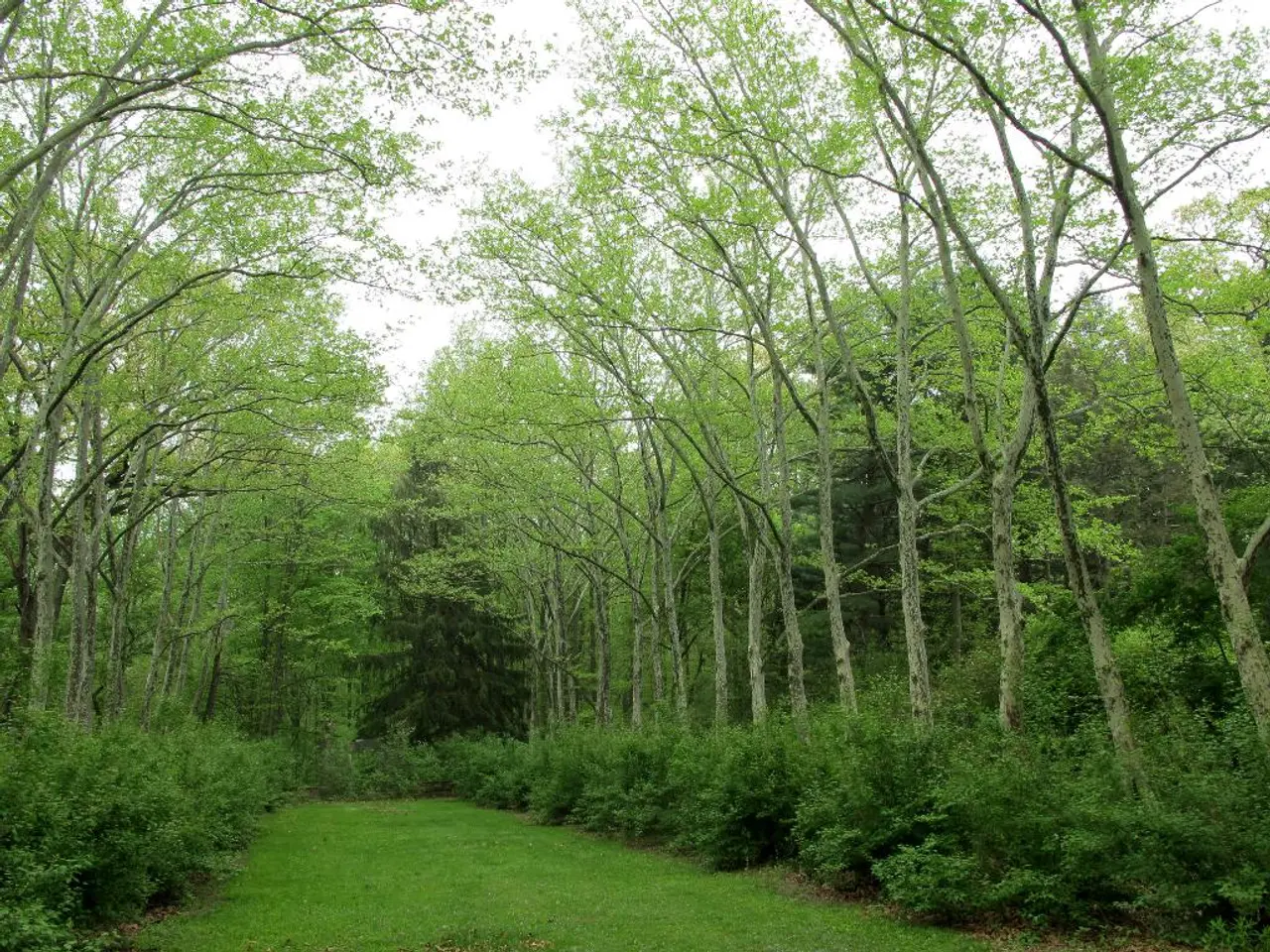'No more watering needed - a drought-resistant gravel garden offers a refreshing respite during sweltering summer days'
In the heart of Surrey, a drought-tolerant, low-maintenance garden has been designed and maintained to flourish in the area's chalky, alkaline soil and limited water availability. The garden's success is a testament to thoughtful soil preparation, plant selection, and landscape structuring.
**Key Design and Maintenance Strategies**
1. **Soil Improvement and Drainage**
Improving the soil structure and drainage is crucial for a garden on chalky soil. Humus-rich materials, such as leaf mould or mushroom compost, are added to improve water retention, while horticultural grit is mixed into the top 20cm of soil to open it up and enhance drainage. For very steep slopes, terracing or raised beds can help stabilise the soil and allow better water retention. Gravel mulch or gravel beds, at least 10-20cm deep, also aid drainage and support drought-tolerant plants.
2. **Plant Selection**
Choosing the right plants is essential for a successful garden on chalky soil. Opt for drought-tolerant species that thrive in alkaline, full-sun conditions, such as Cistus (rockrose), Iris germanica, Perovskia (Russian sage), Erysimum, Allium carinatum subsp. pulchellum, and Santolina rosmarinifolia. Native wildflowers and grasses adapted to dry, chalky, well-drained conditions can also be incorporated into wildflower meadows or naturalistic planting schemes.
3. **Garden Design on a Steep Slope**
Designing a garden on a steep slope requires careful consideration. Naturalistic planting styles, with layers of drought-tolerant perennials and grasses, create stability and prevent erosion. Gravel paths and breaks between planting areas help reduce soil runoff, while modular or terraced beds compartmentalise the slope, capturing moisture and making maintenance easier.
4. **Maintenance Tips**
Once established, plants should rely on natural rainfall; irrigation should only be used during prolonged droughts. Mulching, especially with gravel or grit, helps reduce evaporation and weed growth. Limit watering to the critical establishment phase, as mature drought-tolerant plants prefer dry conditions. Periodic pruning of shrubs like Santolina encourages bushy growth and maintains shape. Monitor for fungal diseases, especially where drainage is not optimal, as some drought-tolerant plants need excellent drainage to avoid rot.
**Summary Table of Recommendations**
| Aspect | Recommendations | |-----------------------|--------------------------------------------------------| | Soil preparation | Add humus (leaf mould), mix in horticultural grit, improve drainage with gravel mulch | | Plant choices | Cistus, Iris germanica, Perovskia, Erysimum, Allium carinatum, Santolina rosmarinifolia | | Slope management | Use terracing, raised beds, dense planting layers, gravel paths | | Maintenance | Minimal watering post-establishment, prune selectively, monitor drainage and diseases |
By combining these soil amendments, plant choices, and thoughtful design for a steep slope, you can create a thriving, low-maintenance garden in Surrey’s chalky, drought-prone conditions that also enhances the natural beauty and sustainability of the location.
- The low-maintenance garden in Surrey employs soil improvement techniques like adding humus-rich materials and horticultural grit to enhance drainage, which is crucial for gardens on chalky soil.
- To flourish under Surrey's drought-prone conditions, the garden's design features plants that are drought-tolerant and thrive in alkaline, full-sun conditions, such as Cistus, Iris germanica, Perovskia, Erysimum, Allium carinatum, Santolina rosmarinifolia, native wildflowers, and grasses.
- In the garden's design, careful consideration is given to its location on a steep slope by incorporating naturalistic planting styles, terracing, raised beds, gravel paths, and dense layers of drought-tolerant perennials and grasses to create stability, prevent erosion, and aid water retention.
- The garden's lifestyle and environmental-science-friendly maintenance strategy involves watering only during prolonged droughts, mulching with gravel or grit, limiting watering to the critical establishment phase, and pruning selectively for continued growth and shape.
- The garden's design on a steep slope not only helps the landscape thrive but also supports home-and-garden sustainability by enhancing the natural beauty of its surroundings in the heart of Surrey.




